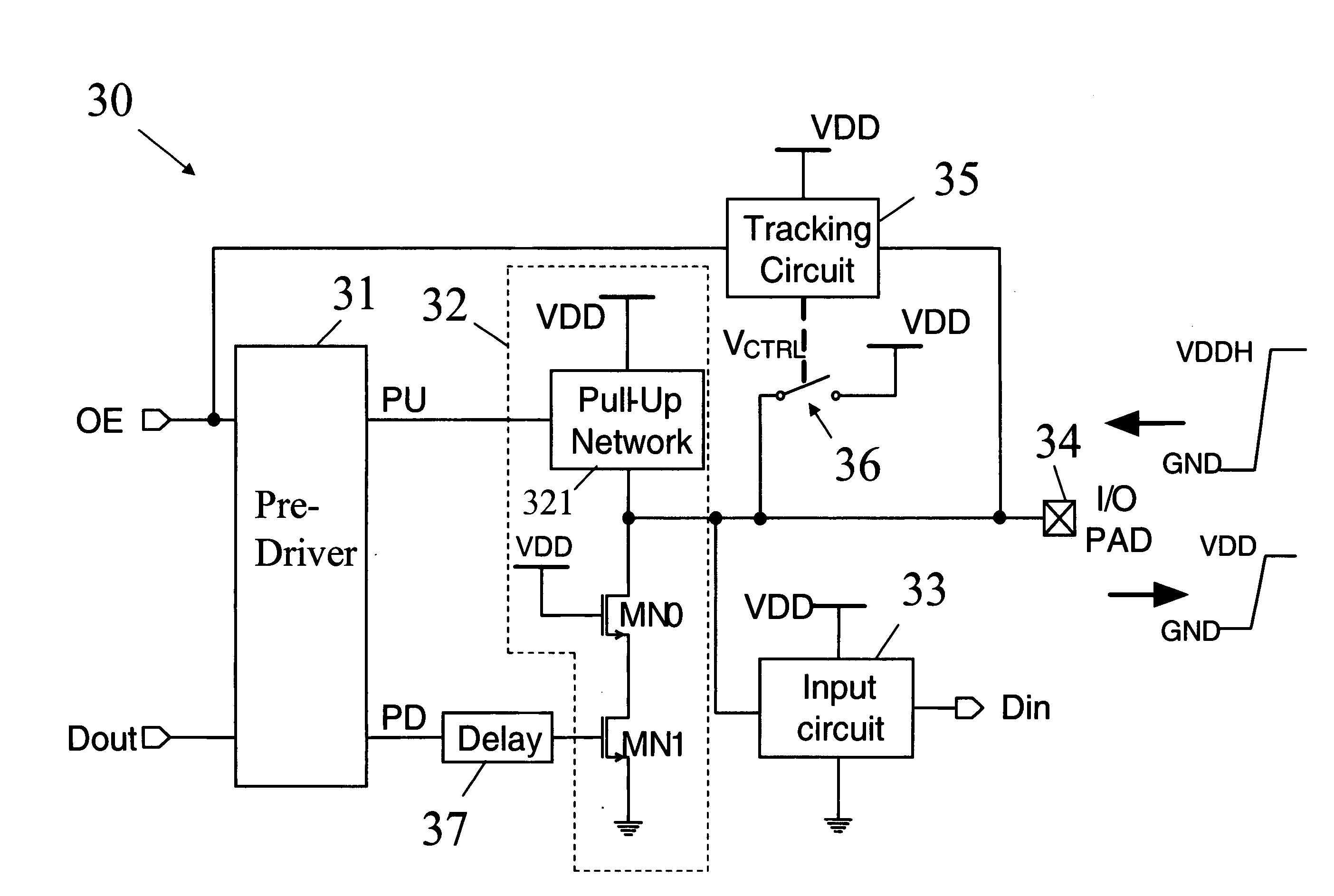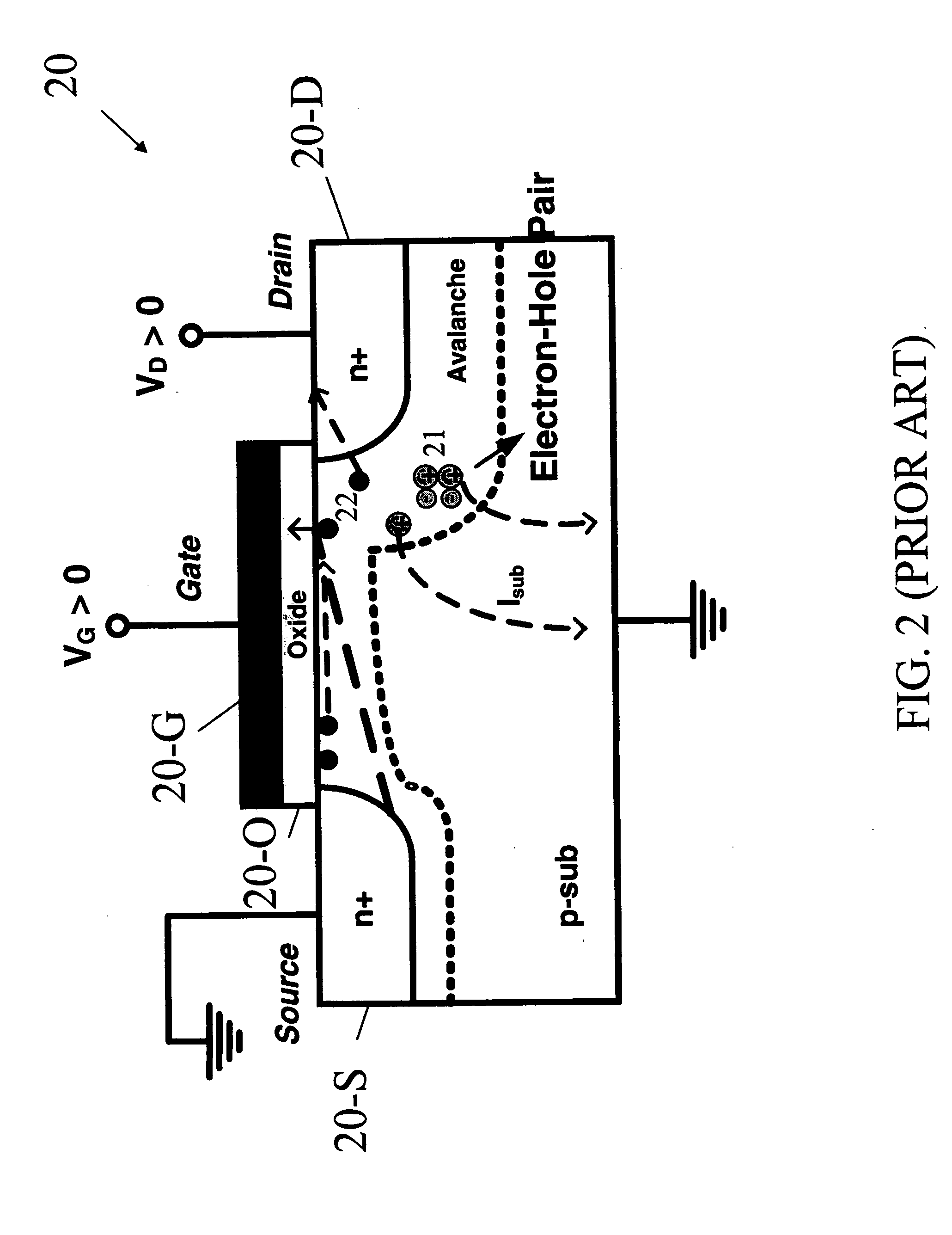Protection circuits and methods of protecting circuits
a protection circuit and buffer technology, applied in the direction of voltage/current interference elimination, pulse technique, reliability increasing modifications, etc., can solve the problem of degrading or even failure of transistors, shifting threshold voltage, additional surface scattering,
- Summary
- Abstract
- Description
- Claims
- Application Information
AI Technical Summary
Benefits of technology
Problems solved by technology
Method used
Image
Examples
Embodiment Construction
[0025]Reference will now be made in detail to the present examples of the invention, examples of which are illustrated in the accompanying drawings. Wherever possible, the same reference numbers will be used throughout the drawings to refer to the same or like parts.
[0026]FIG. 3A is a schematic block diagram of a buffer circuit 30 in a mixed-voltage interface consistent with an example of the present invention. Referring to FIG. 3A, the buffer circuit 30 may include a pre-driver 31, a post-driver or output circuit 32, an input circuit 33, an input / output (I / O) pad 34, a tracking circuit 35 and a switch device 36. The post-driver 32 may further include a pull-up network 321 and stacked NMOS transistors MN0 and MN1. The pre-driver 31, the pull-up network 321 and the input circuit 33 are simplified into function blocks for convenience. The pre-driver 31 generates control signals PU and PD in response to an output enable (OE) signal and a data output (Dout) signal from an internal circu...
PUM
 Login to View More
Login to View More Abstract
Description
Claims
Application Information
 Login to View More
Login to View More - R&D
- Intellectual Property
- Life Sciences
- Materials
- Tech Scout
- Unparalleled Data Quality
- Higher Quality Content
- 60% Fewer Hallucinations
Browse by: Latest US Patents, China's latest patents, Technical Efficacy Thesaurus, Application Domain, Technology Topic, Popular Technical Reports.
© 2025 PatSnap. All rights reserved.Legal|Privacy policy|Modern Slavery Act Transparency Statement|Sitemap|About US| Contact US: help@patsnap.com



